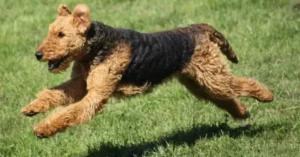History
The Spanish Bulldog, often referred to as the “Alano Español” or simply “Alano,” is a robust and ancient breed with a rich history deeply rooted in Spain. In this brief explanation, we will explore the historical aspects related to the Spanish Bulldog, tracing its origins, its roles in Spanish society, and its evolution over time.
Origins: The history of the Spanish Bulldog can be traced back over 2,000 years to the Iberian Peninsula. It is believed to have descended from ancient mastiff-type dogs brought to the region by Phoenician and Roman traders. These dogs were crossbred with local Spanish breeds, resulting in the development of a powerful and versatile working dog known as the Alano Español.
Roles in Spanish Society: Throughout its history, the Spanish Bulldog played numerous roles in Spanish society, reflecting its exceptional adaptability and utility. Here are some of its most prominent roles:

- War and Hunting: In ancient times, Alanos were used as war dogs and hunting companions. Their strength, agility, and courage made them valuable assets in battles and for hunting large game like wild boars and bears.
- Livestock Management: As Spain’s agrarian society evolved, Alanos were employed as livestock guardian dogs. They protected herds of cattle, sheep, and goats from predators and provided a sense of security to Spanish farmers.
- Bullfighting: During the heyday of bullfighting in Spain, Alanos played a crucial role as catch dogs. They were trained to subdue and immobilize bulls after a bullfighter had finished their performance. This practice helped ensure the safety of both humans and livestock.
- Guard Dogs: Alanos were highly regarded as guard dogs due to their imposing presence and protective instincts. They were often used to safeguard estates, farms, and homes.
Evolution and Decline: Over the centuries, the Spanish Bulldog underwent gradual changes in appearance and function. With the decline of bullfighting and changes in agricultural practices, their traditional roles diminished, and their numbers declined. Crossbreeding with other breeds further altered their characteristics.
Preservation and Revival: In the 20th century, efforts were made to preserve the breed and restore its heritage traits. Breed enthusiasts and organizations worked diligently to protect the Spanish Bulldog from extinction. They aimed to maintain the breed’s working abilities, appearance, and temperament.
Modern Spanish Bulldog: Today, the Spanish Bulldog is recognized as a distinct breed with a robust and muscular build. They are characterized by their short, smooth coat and strong, well-defined features. They are known for their loyalty, intelligence, and protective nature, making them excellent companions and working dogs.
You can also read about some of other category of bulldog and find the best fit for your family
Spanish Bulldog (Alano Español)Size
1. Spanish Bulldog Origins: The Spanish Bulldog, or Alano Español, is a historic breed originating in Spain. It has a rich history dating back to ancient times, where it was primarily used for hunting, guarding livestock, and as a working dog. The breed’s ancestry can be traced to the Iberian Peninsula.
2. Physical Characteristics: The Spanish Bulldog is a robust and muscular breed with a medium to large build. They have a short coat that is often brindle in color, and their ears may be cropped or left natural. Their distinctive broad head and strong jaws give them a unique appearance.
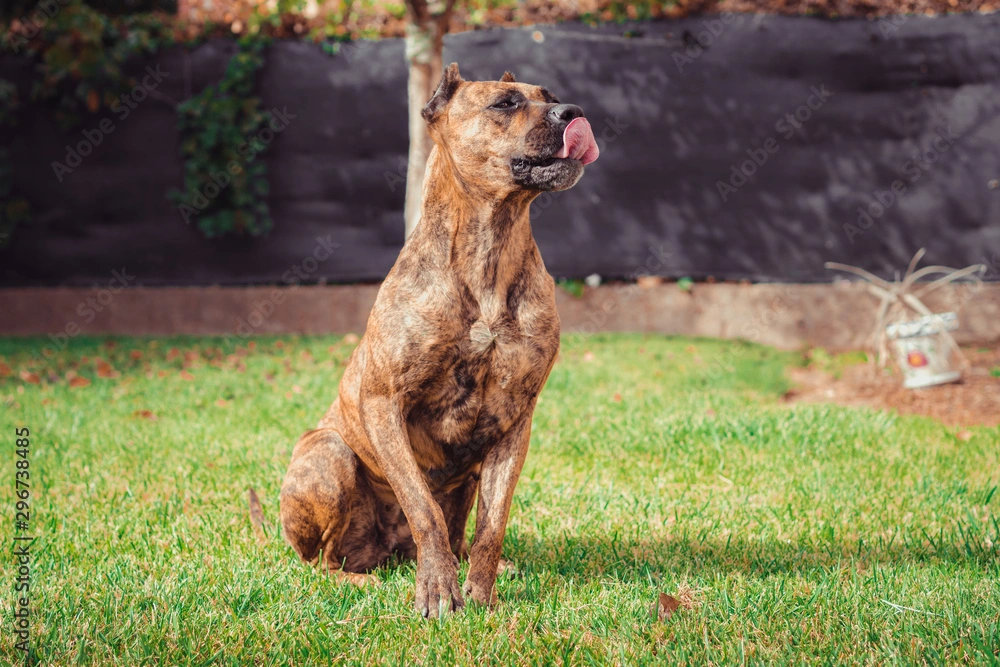
3. Temperament: These dogs are known for their loyal and protective nature. They are highly affectionate towards their families and can be gentle with children. However, they are also naturally wary of strangers, making them excellent guard dogs.
4. Intelligence and Trainability: Spanish Bulldogs are intelligent but can be independent and stubborn at times. Early socialization and consistent, positive reinforcement training are essential to ensure they become well-behaved companions. They respond well to firm yet gentle training methods.
5. Exercise Needs: Due to their history as working dogs, Spanish Bulldogs have high energy levels and require regular exercise to stay healthy and happy. Daily walks, playtime, and mental stimulation are essential to prevent boredom and destructive behaviors.
6. Health Considerations: Like many purebred dogs, Spanish Bulldogs can be prone to certain health issues, including hip dysplasia and bloat. Responsible breeding practices and regular veterinary check-ups can help mitigate these risks.
7. Grooming Requirements: Their short coat is relatively low-maintenance. Regular brushing will help keep their coat clean and reduce shedding. Additionally, routine nail trimming, ear cleaning, and dental care are necessary for their overall well-being.
8. Historical Use: The Spanish Bulldog has a storied history as a versatile working dog. They were used for various tasks, including hunting wild boar and cattle herding. Their strength and endurance made them invaluable assets to Spanish farmers and hunters.
9. Preservation Efforts: At certain points in history, the Spanish Bulldog faced near extinction due to changes in farming and hunting practices. However, dedicated breed enthusiasts and organizations have worked tirelessly to preserve and promote the breed, ensuring its survival to this day.
10. Modern Roles: While their traditional roles have diminished, Spanish Bulldogs are now primarily kept as loyal family pets and guard dogs. Their protective instincts and affectionate nature make them great companions for those willing to invest time in their training and care.
11. Alano Español in Pop Culture: These dogs have made appearances in Spanish literature and art, often symbolizing strength, loyalty, and bravery. They have also been featured in films and television shows, further cementing their place in popular culture.
12. Popularity and Recognition: While the Spanish Bulldog may not be as well-known as some other breeds, it has a dedicated following of enthusiasts and is recognized by various kennel clubs, including the Royal Spanish Canine Society.
Nutrition and Diets For Alano Español
Nutrition:
Nutrition refers to the process by which living organisms, including humans and animals, obtain and utilize the essential nutrients needed for growth, maintenance, and overall well-being. These nutrients include carbohydrates, proteins, fats, vitamins, minerals, and water. Proper nutrition is vital for the Spanish Bulldog, as it directly impacts their health, energy levels, and longevity.
For Spanish Bulldogs, a balanced diet is crucial. It should provide the necessary nutrients in the right proportions to support their specific needs. Here are some key aspects of nutrition for Spanish Bulldogs:

- Protein: Protein is essential for muscle development and repair. Spanish Bulldogs require a diet rich in high-quality animal protein sources like chicken, turkey, and lean beef.
- Fat: Healthy fats are a concentrated source of energy and support various bodily functions. Ensure that your Bulldog’s diet includes appropriate fats while avoiding excessive amounts to prevent obesity.
- Carbohydrates: Carbohydrates provide energy, but Bulldogs don’t require as many carbs as some other breeds. Opt for complex carbohydrates like brown rice and sweet potatoes to avoid excessive sugar intake.
- Fiber: Adequate fiber aids in digestion and can help prevent constipation. It’s essential to maintain healthy bowel movements in Bulldogs.
- Vitamins and Minerals: Bulldogs need a variety of vitamins and minerals for proper growth and maintenance. Ensure their diet includes a range of fruits and vegetables to provide essential vitamins like vitamin C and minerals like calcium.
- Water: Proper hydration is essential. Make sure your Bulldog has access to fresh, clean water at all times. Dehydration can lead to various health issues.
- Portion Control: Bulldogs are prone to obesity, so portion control is crucial. Follow the feeding guidelines recommended by your veterinarian or the dog food manufacturer. Adjust portions based on your dog’s age, activity level, and overall health.
- Avoid Toxic Foods: Some human foods can be toxic to dogs, including chocolate, grapes, and onions. Keep these substances away from your Bulldog’s reach.
- Special Dietary Needs: Some Bulldogs may have specific dietary needs or allergies. Consult your veterinarian to determine if your dog requires a specialized diet.
- Meal Frequency: Typically, Bulldogs are fed two meals a day. Splitting their daily food intake into multiple meals can help prevent bloat, a condition they are susceptible to due to their brachycephalic (short-nosed) anatomy.
Diets:
Diets, in the context of nutrition, refer to the specific food choices and eating patterns followed by individuals or animals. There are various types of diets tailored to different goals, preferences, and health conditions. For Spanish Bulldogs, the choice of diet can significantly impact their well-being. Here are some common types of diets and considerations for Spanish Bulldogs:
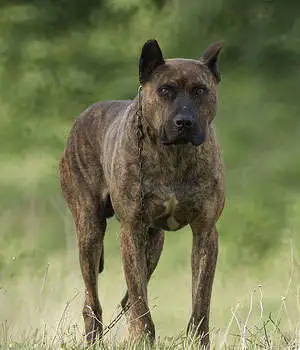
- Commercial Dog Food: Many dog owners opt for commercial dog food, which comes in dry kibble, canned, or semi-moist forms. Choose high-quality brands that meet the nutritional needs of Bulldogs. Look for options formulated for specific life stages (puppy, adult, senior).
- Raw Diet (BARF): Some owners choose to feed their Bulldogs a raw diet, often referred to as the BARF (Biologically Appropriate Raw Food) diet. This diet typically consists of raw meat, bones, fruits, and vegetables. It’s essential to consult with a veterinarian to ensure the diet is balanced and safe.
- Home-Cooked Diet: Homemade dog food can be an option if prepared correctly. It allows for more control over ingredients. However, it’s vital to consult with a veterinary nutritionist to create a balanced diet, as homemade diets can lack essential nutrients if not properly formulated.
- Prescription Diets: Bulldogs with specific health issues may require prescription diets tailored to their condition. These diets can help manage conditions such as allergies, gastrointestinal problems, or kidney disease.
- Weight Management Diet: Bulldogs are prone to obesity, so a weight management diet may be necessary if your dog is overweight. These diets are formulated to help dogs lose weight safely while maintaining essential nutrients.
- Hydrolyzed Protein Diet: For Bulldogs with food allergies or sensitivities, hydrolyzed protein diets can be beneficial. These diets contain proteins broken down into smaller, less allergenic fragments.
- Senior Diet: As Bulldogs age, their nutritional needs may change. Senior diets are formulated to support their aging bodies, addressing issues like joint health and maintaining a healthy weight.
Training and Intelligence
Training: Training is a crucial aspect of owning a Spanish Bulldog, as it plays a significant role in ensuring their safety, well-being, and overall compatibility as a pet. Spanish Bulldogs, also known as Alano Españols, are known for their strong and independent nature, making training a unique experience. In this section, we’ll delve into the training process for Spanish Bulldogs, covering various aspects.
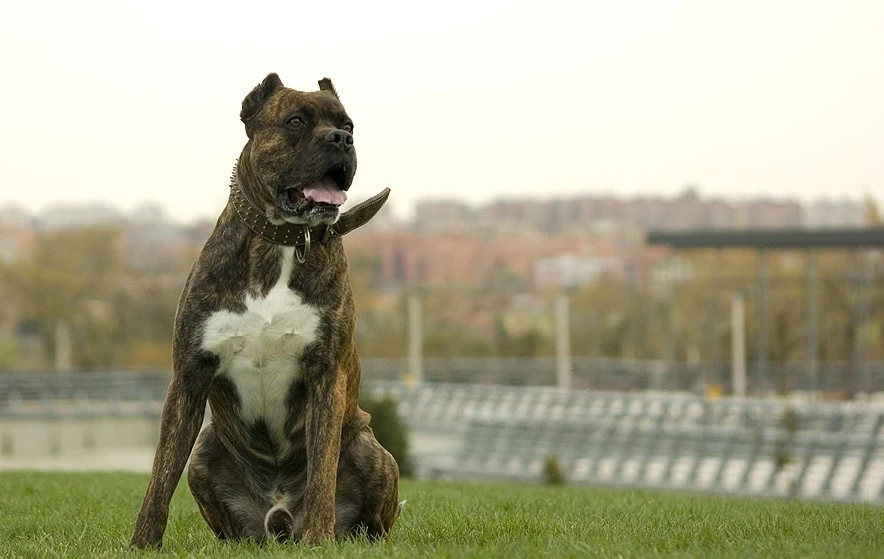
- Socialization: Socializing your Spanish Bulldog is vital from an early age. Introducing them to different people, animals, and environments helps prevent aggressive or anxious behavior later in life. Positive interactions during socialization are essential for a well-rounded and well-behaved dog.
- Obedience Training: Spanish Bulldogs are intelligent dogs, but they can also be stubborn. Obedience training is essential to establish authority and ensure your dog understands basic commands like sit, stay, and come. Consistent and patient training methods are the keys to success.
- House Training: Like all dogs, Spanish Bulldogs need to be house-trained. Establish a routine for feeding and bathroom breaks, and be consistent with praise when they do their business outside. Crate training can also be effective for housebreaking.
- Leash Training: Spanish Bulldogs are strong and muscular, which means leash training is crucial. Teach them to walk on a leash without pulling and respond to commands like “heel.” Using positive reinforcement, such as treats, can motivate them during training sessions.
- Behavioral Issues: Some Spanish Bulldogs may exhibit territorial or aggressive behavior if not properly trained. Consult a professional dog trainer if you encounter any behavioral issues that you’re unsure how to address.
Intelligence: Spanish Bulldogs possess a unique combination of intelligence and independence, which can make training both challenging and rewarding. Understanding their intelligence level and specific traits is essential for effective training and overall care.
- Independent Thinkers: Spanish Bulldogs are known for their independent thinking, which can sometimes be mistaken for stubbornness. They may question commands and prefer making their own decisions. To work with this trait, use positive reinforcement techniques and be patient.
- Problem Solvers: These dogs have a knack for problem-solving. They can figure out how to open doors or access food if not properly secured. This intelligence requires owners to think creatively when puppy-proofing their homes.
- Quick Learners: Despite their independence, Spanish Bulldogs are quick learners. They can grasp new concepts and commands relatively fast if training is consistent and positive. Their intelligence can be harnessed for various activities like agility training or advanced tricks.
- Adaptability: Spanish Bulldogs are adaptable dogs that can thrive in various environments. Their intelligence allows them to adjust to different living conditions, but they still require mental stimulation to prevent boredom-related issues.
- Work and Activity: Historically, Spanish Bulldogs were bred for various tasks, such as hunting and herding. Their intelligence reflects their ability to perform these tasks effectively. Engaging them in tasks that cater to their natural instincts can be mentally stimulating.
Health and Lifespan Spanish Bulldog
The Spanish Bulldog, also known as the Alano Español, is a robust and unique breed with distinctive characteristics. When it comes to the health and lifespan of these dogs, several factors need consideration.
Health Considerations:
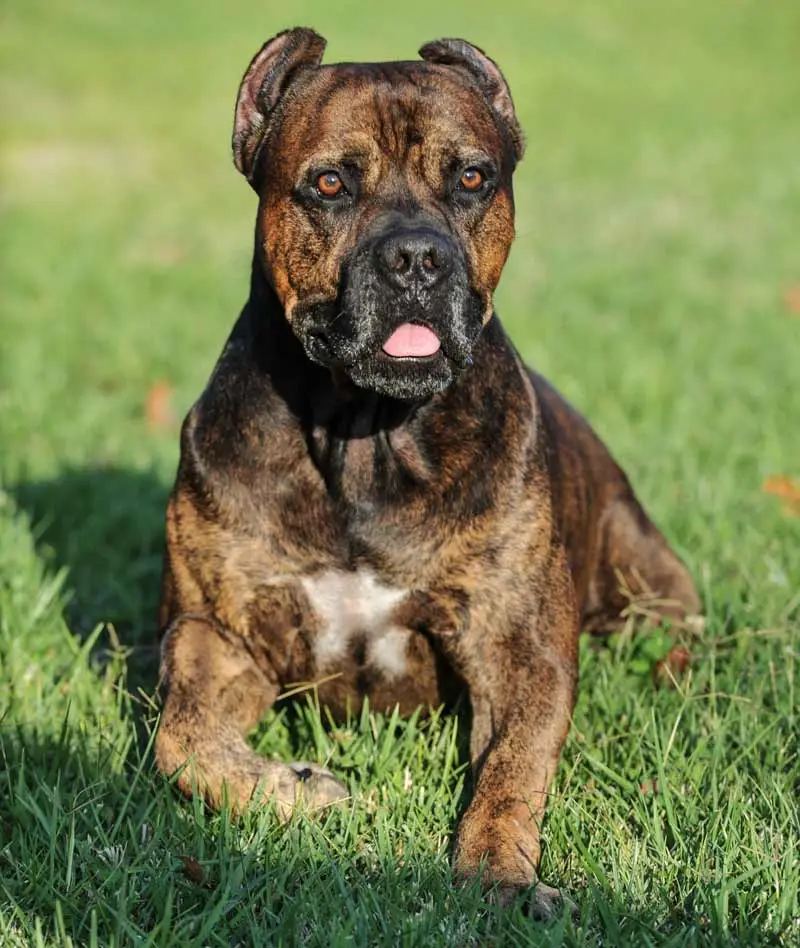
- Muscular and Robust Build: Spanish Bulldogs are known for their muscular and robust build. This breed’s physical strength is one of its defining features, making them well-suited for various tasks, including hunting and guarding.
- Hip Dysplasia: Like many larger breeds, Spanish Bulldogs can be prone to hip dysplasia, a hereditary condition where the hip joint doesn’t develop properly. This can lead to arthritis and mobility issues. Regular vet check-ups are essential to monitor and manage this condition.
- Bloat: Bloat, or gastric torsion, is a severe and potentially life-threatening condition in Spanish Bulldogs. It occurs when the stomach fills with gas, causing it to twist. Immediate veterinary intervention is crucial to save the dog’s life.
- Obesity: Spanish Bulldogs are known to enjoy their food, and without proper portion control and exercise, they can easily become overweight. Obesity can lead to various health problems, including joint issues and diabetes.
- Skin Issues: Some Spanish Bulldogs may be prone to skin problems, including allergies and irritations. Proper grooming and regular bathing can help manage these issues.
- Heart Conditions: Certain heart conditions, such as dilated cardiomyopathy, can affect Spanish Bulldogs. Regular check-ups with a veterinarian can help detect and manage these conditions early on.
- Eye Problems: Some Spanish Bulldogs may develop eye problems like entropion, a condition where the eyelids roll inward, causing irritation and discomfort. Surgical correction may be necessary in severe cases.
Lifespan:
The lifespan of a Spanish Bulldog can vary depending on various factors, including genetics, diet, exercise, and overall care. On average, Spanish Bulldogs have a lifespan of 9 to 12 years. However, with proper care and attention to their specific needs, some individuals have been known to live even longer.
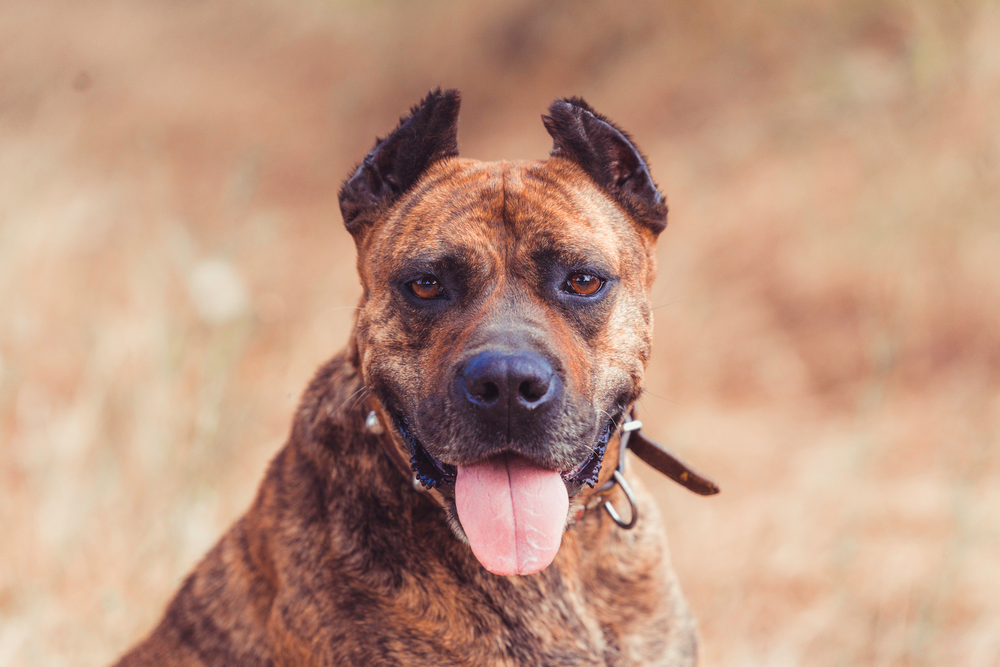
Factors Influencing Lifespan:
- Genetics: Genetic factors play a significant role in a Spanish Bulldog’s lifespan. Reputable breeders aim to produce healthy dogs with good genetic backgrounds to minimize the risk of hereditary health issues.
- Diet: Proper nutrition is crucial for a Spanish Bulldog’s longevity. Feeding them a balanced diet, appropriate for their age and activity level, can help prevent obesity and related health problems.
- Exercise: Regular exercise is essential for maintaining a healthy weight and preventing joint issues. Spanish Bulldogs enjoy physical activity and benefit from daily walks and playtime.
- Healthcare: Routine veterinary check-ups are vital for early detection and management of any health issues. Vaccinations, preventive medications, and dental care are also essential components of their healthcare routine.
- Stress and Environment: A stable and stress-free environment can contribute to a longer lifespan. Spanish Bulldogs thrive in a calm and loving atmosphere.
- Socialization: Proper socialization from a young age helps prevent behavioral issues and can lead to a happier and less stressed dog, which can positively impact their overall health.
- Grooming: Regular grooming, including brushing their short coat and cleaning their skin folds (which they have due to their loose skin), can prevent skin issues and infections.
Conclusion
The history of the Spanish Bulldog, or Alano Español, is a testament to the breed’s resilience and adaptability over millennia. From their origins as war dogs and hunters to their roles in livestock management and bullfighting, these dogs have played a significant part in Spanish culture and society. While their traditional roles have evolved and declined, dedicated breed enthusiasts have worked tirelessly to preserve and revive the breed, ensuring that the Spanish Bulldog continues to be a cherished and respected part of Spain’s heritage.
In conclusion, the health and lifespan of a Spanish Bulldog are influenced by various factors, including genetics, diet, exercise, and healthcare. Responsible ownership and attention to their specific needs are essential for ensuring a happy and healthy life for these unique and robust dogs. With proper care and regular vet visits, Spanish Bulldogs can enjoy a lifespan of 9 to 12 years or more, making them loyal companions for many years to come.



